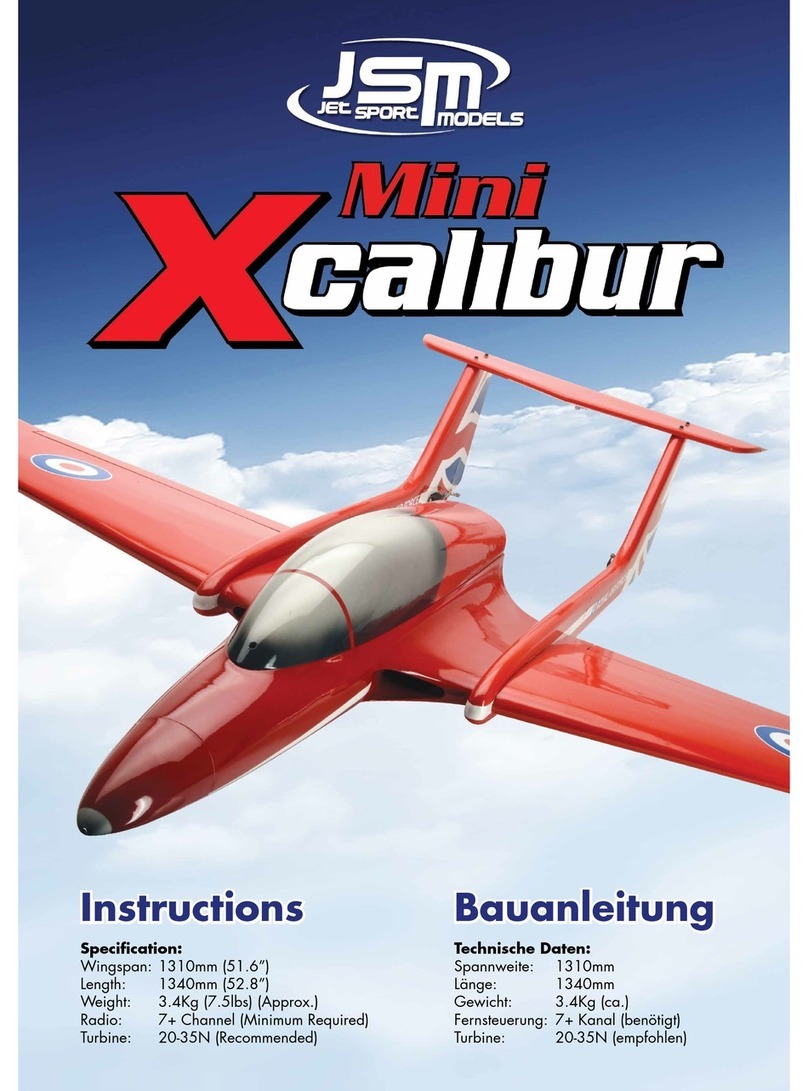Page 9
Prepare the fuel system for the tank as shown – it is
strongly recommended that all fuel lines are safety
wired to all tubes/fittings to eliminate any leakage or
possibility of the fuel lines becoming detached. Note
the use of a felt clunk to eliminate any air bubbles
being passed through to the turbine. Complete
tank assembly and then check for leaks by sealing
the pipes and plunging the tank into hot water to
pressurise. If any leaks are found they can be sealed
with a drop of cyano or 5-minute epoxy.
Fit the fuel tank and retain with a small amount of
servo tape onto the mounting plate and two heavy
duty cable ties – tighten these snugly, but do not
overtighten, as the fuel tank may be damaged. Glue a
short length of brass or aluminium tubing through the
bottom of the fuselage and connect the overflow pipe
from the tank to this.
Mount the turbine being used with self tapping screws,
note the use of a FOD guard. The fuel and kerostart
lines should be run down one side of the fuselage with
the electrical cables run down the other side.
Install the header tank (if used) towards the front of the
fuselage as shown, in this case the tank was secured
to a ply mounting plate using servo tape and cable
ties, with the plate itself being attached to mounting
rails using small self tapping screws. As nose weight
will be required unless a very light turbine is being
used, ensure that as much of the heavy equipment as
possible is mounted as far forward in the fuselage as
is possible whilst ensuring easy access.
Install the ECU on the left hand side of the fuselage on
the equipment plate. Secure using double sided tape
to dampen vibrations and a cable tie. Fit I/O board.
Step 35
Step 36
Step 37
Step 38
Step 39




























